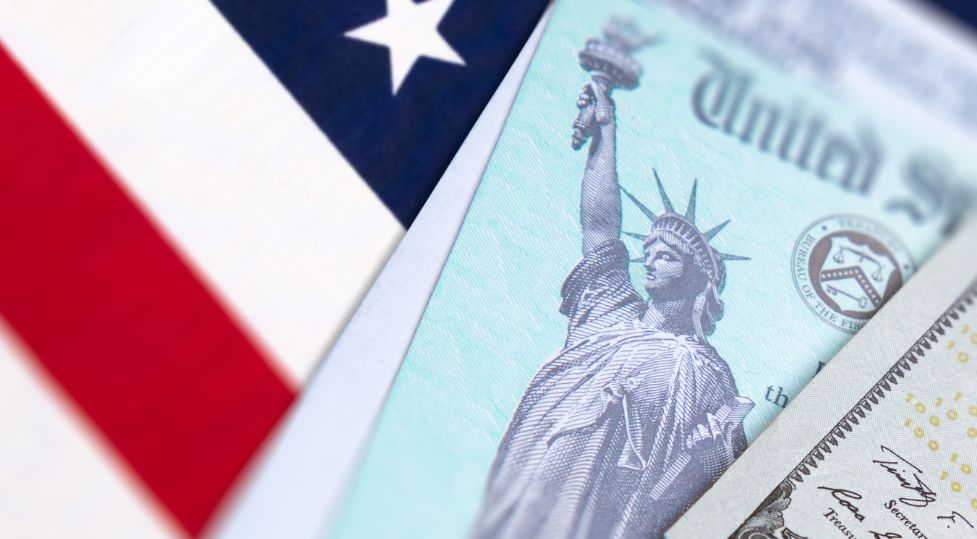The word “de-dollarization” is increasingly being read and heard. In the year of turmoil for international trade brought about by Donald Trump’s tariff policy and his explicit threats to the independence of the Federal Reserve, Bank of America believes that the de-dollarization process “has been evident,” Citi says it is only a “mirage,” and Ninety One suggests we may be facing a turning point both for the U.S. currency and for international markets. The dollar has fallen nearly 9% this year.
In a note to its clients, BofA strategists highlighted the renewed weakness of the dollar, as “investors are increasingly focusing on currency hedging of U.S. dollar-denominated risk.”
According to Bank of America, “this will remain a recurring theme for some time, as we expect the U.S. dollar to depreciate further from its overvalued levels.”
The strategists also wrote that “maintaining a constructive view on U.S. equities is only compatible with adequate currency risk hedging of that exposure.”
They added that while the shift in foreign exchange reserve allocation away from the dollar has been “gradual,” the process of “de-dollarization” has been “evident.”
Just an Illusion?
Reserve managers at major central banks show a growing bias toward non-traditional currencies such as the Australian dollar, the Canadian dollar, and even the currencies of BRICS countries (Brazil, Russia, India, China, and South Africa). Although the change is gradual, BofA analysts described this process as a “fork” in reserves that could become a dominant trend in the coming years.
By contrast, Citigroup analysts used the word “mirage” to refute the view that “global investors are seeking to shed their dependence on the dollar.” The “de-dollarization” narrative, they said, is an “illusion” without support in economic data.
The team of strategists led by Osamu Takashima noted in a report to clients that U.S. balance of payments data show no signs of “mass dumping of dollar assets.”
The bank’s team added that, in the long run, there is no significant correlation between inflows into foreign securities (in size) and the performance of the dollar exchange rate. The strategists wrote: “We see de-dollarization as a narrative created to justify dollar weakening caused by position unwinding and adjustments to hedge ratios. We believe the risk of dollar depreciation should be considered separately from the issue of de-dollarization.”
A document signed by Daniel Morgan, analyst at the Investment Institute of Ninety One, suggests that the long period of leadership of U.S. stocks (and the strong dollar) could be reaching a turning point. And that the consensus that the United States will remain “the safe place” to invest is being challenged by several structural factors that could favor markets outside the U.S. in both developed and emerging countries.
The report also notes that Europe has shifted from a phase of austerity to a more expansive policy, and that many emerging markets have healthier public finances than developed countries, giving them “room to maneuver.”
Looking Toward Other Regions
The global asset manager suggests that although international investors hold large positions in U.S. assets, “there is a risk that net flows into the U.S. may decrease or reverse.” For Ninety One, the dollar is overvalued compared to its history, and U.S. equities remain expensive in global terms.
One of the firm’s conclusions is that fundamental indicators suggest a “lower allocation to U.S. equities than is implied by market-cap weighted benchmarks, as international and emerging markets offer potentially higher returns.”
“In order to navigate successfully in this next cycle, investors must look beyond the familiar to identify new growth drivers emerging across regions, sectors, and market segments. Forward-looking diversification and careful, bottom-up selection will be necessary to capture a broader set of global opportunities shaped by fundamental trends rather than index inertia,” the firm emphasized in the report.
The Supreme Court will review on November 5 the legality of the global tariffs pushed by Donald Trump, who also repeatedly criticized the Federal Reserve for not cutting rates more aggressively. This, along with expectations of new rate cuts, is fueling the search for diversification in international portfolios and accelerating the partial move away from the dollar as the main reserve currency.




